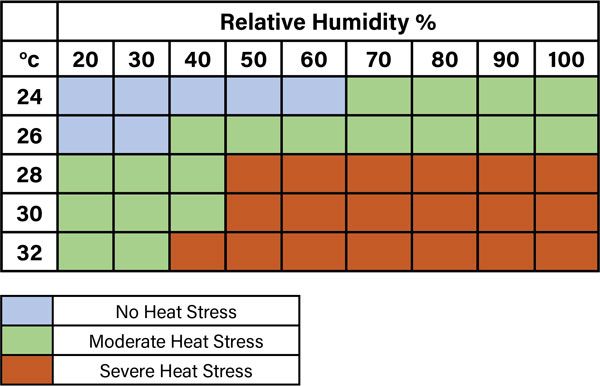Heat Stress

Cathal Bohane
Head of InTouch Nutrition
They have to invest heavily in permanent infrastructure and methods to counteract these events. Here, in this part of the world however, we can usually count on one hand the number of days we hit the 30s in degrees, if at all. Nevertheless, we are now experiencing more extremes in weather. Heat stress is not just about temperature – it also involves humidity. It can be seen from the chart below that even at higher temperatures, it is humidity that can tip the balance of stress for the animal.
The ideal temperature for cattle is between 5 to 15oC; beyond this, while the cow is still comfortable, they are using energy to control their body temperature. This is where we get into heat stress where the animal struggles to control her body temperature. Heat stress will negatively affect a wide variety of areas, from yield (10-25 per cent), decreased conception rate and immunity, increased risk of mastitis and lameness, as well as poor rumen function.

Putting measures in place is important to counteract these effects; they are only short-term so any changes can be cheap and cheerful. Making sure that cows have enough water available is the priority, so put measures in place to increase a reserve of water (seven litres per cow). When standing in the yard, offering shade or having a sprinkler-type system will add to cooling but cows should be able to dry as well, rather than being constantly wet.
The next big step is to maintain intake; this can drop by 10 per cent in even moderately hot weather, which has knock-on effects on yield, milk solids and fertility. Giving cows fresh grass at the coolest part of the day, increasing concentrates with a higher maize content and adding fat to the diet are just some measures you can use to help alleviate the issues.






